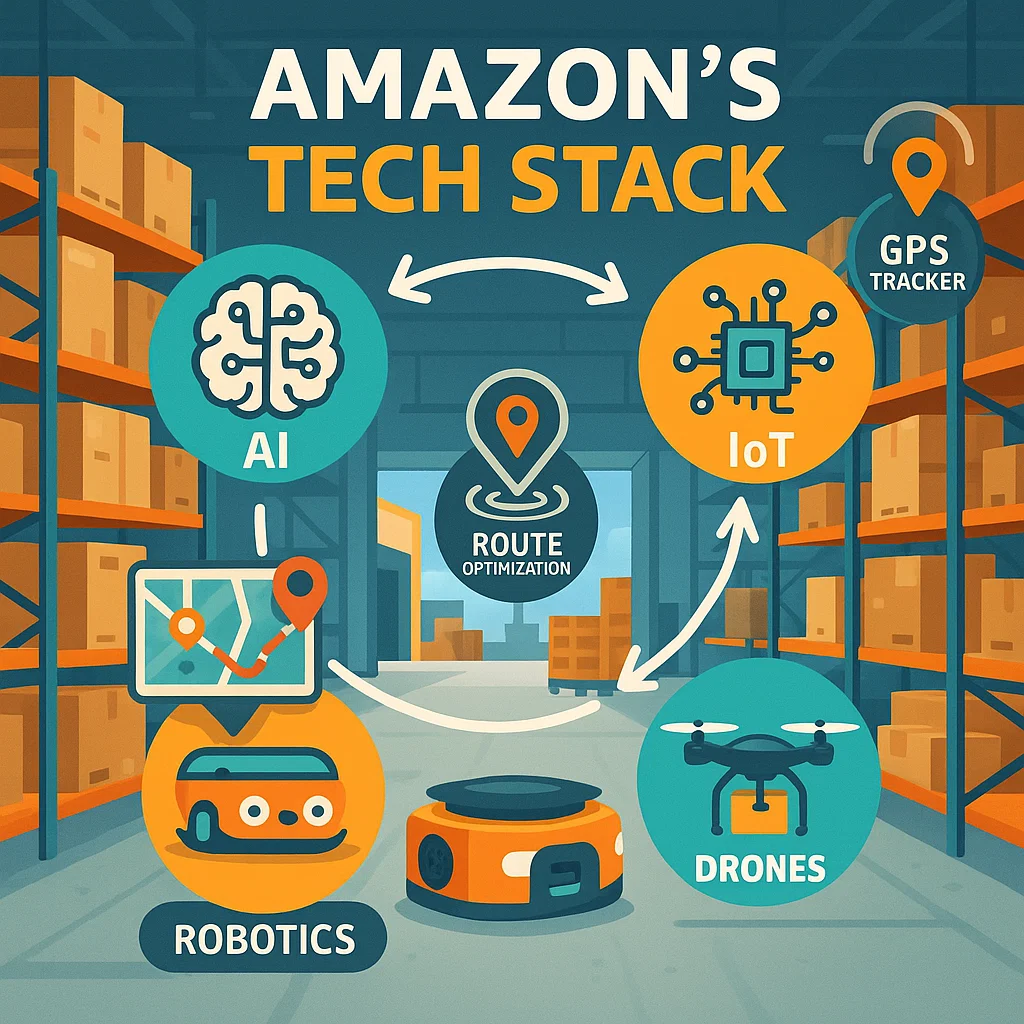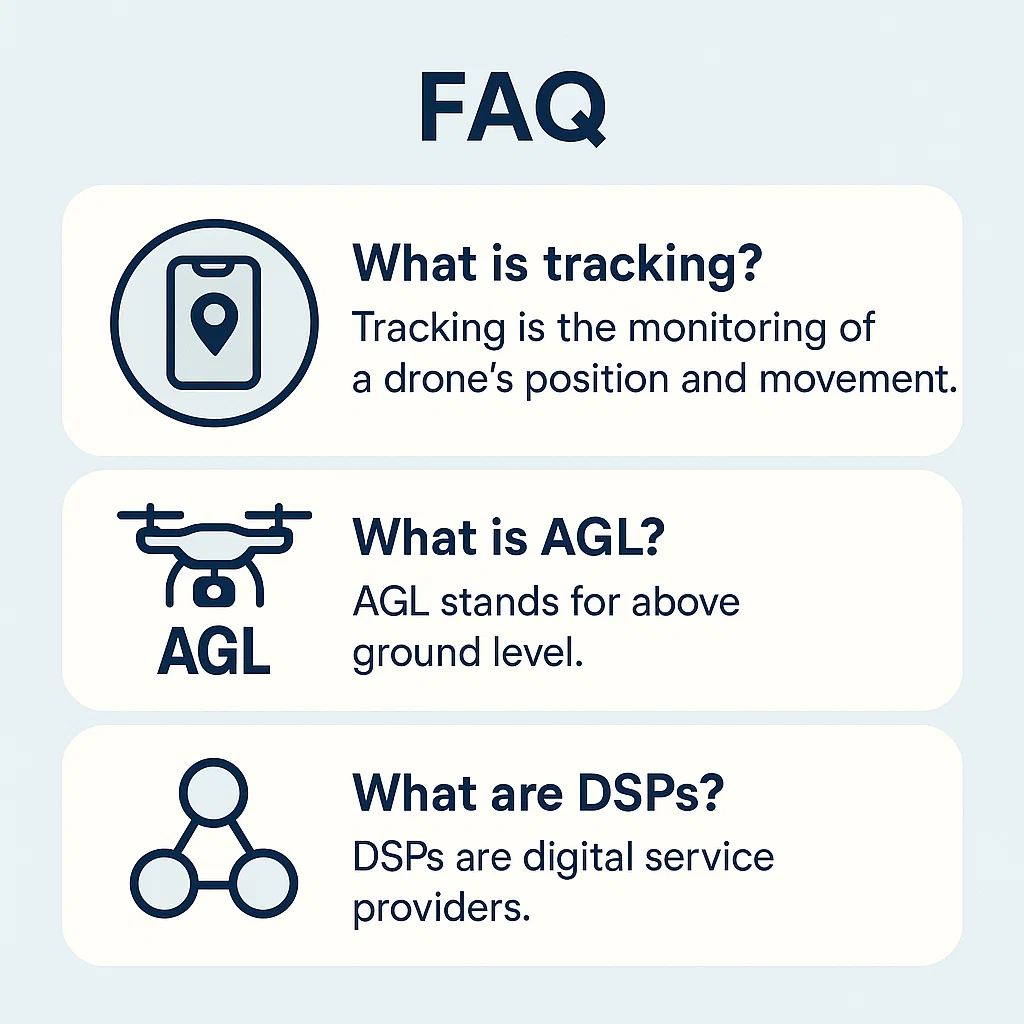How Amazon Logistics Delivers Millions package Daily
Every day, millions of packages—from books to electronics—arrive at doorsteps worldwide, often within hours of an order. Behind this seamless experience is Amazon Logistics, the powerhouse driving Amazon’s promise of speed, reliability, and customer obsession. In 2025, Amazon delivers over 10 million packages daily, leveraging cutting-edge technology, a vast network of drivers, and innovative services like Amazon Global Logistics.
This comprehensive guide uncovers how Amazon’s logistics giant operates, from fulfillment centers to last-mile delivery, and offers practical tips for customers and sellers. Whether you’re tracking a package, running an e-commerce business, or curious about Amazon’s scale, you’ll discover the strategies, innovations, and challenges shaping the world’s largest delivery network. Stay connected with AMZ Updates for latest information.
The Scale of Amazon Logistics: 10 Million Packages Daily
Amazon Logistics is the backbone of the e-commerce giant, managing the end-to-end process of delivering 5.9 billion packages annually, or roughly 10 million daily. This scale is powered by a sprawling infrastructure and strategic partnerships.
Key Statistics (2023–2025 Projections)
- Package Volume: 5.9 billion packages in 2023, up 15.7% from 2022. In 2025, estimates suggest 6.5–7 billion annually.
- Drivers: Over 275,000 drivers across 3,000+ Delivery Service Partners (DSPs) globally.
- Fleet: 70,000+ motor vehicles, 15,000 electric vehicles (goal: 100,000 by 2030), and 110+ Amazon Air aircraft.
- Fulfillment Centers: Over 175 worldwide, spanning 243.5 million square feet, equivalent to a quarter of Manhattan.
- Market Share: 22% of U.S. parcel volume in 2023, trailing UPS (24%) but surpassing FedEx.
- Revenue: Logistics generated $80 billion in 2020; combined shipping/fulfillment costs reached $180.1 billion in 2023.

How It Works
Amazon’s logistics network operates in three phases:
- Fulfillment: Products are stored in fulfillment centers, where robots and conveyor belts pick, pack, and sort orders.
- Middle Mile: Amazon Air and 6,500+ trailers move packages between warehouses, sorting centers, and delivery stations.
- Last Mile: DSPs, Amazon Flex drivers, and partners like USPS deliver to customers, often within 24 hours.
In 2025, Amazon’s focus on same-day and next-day delivery (60% of Prime orders in major U.S. metros) underscores its efficiency, driven by AI-optimized routes and real-time tracking.
Technology Powering Amazon Logistics
Amazon’s ability to deliver millions daily hinges on advanced technology, blending AI, IoT, robotics, and software to streamline operations.
AI and Machine Learning
AI optimizes every stage of logistics:
- Route Optimization: Algorithms analyze traffic, weather, and delivery stops to create efficient routes, saving time and fuel.
- Delivery Predictions: Machine learning forecasts delivery times with 95% accuracy, updating customers in real time.
- Inventory Management: AI predicts demand, ensuring fulfillment centers are stocked for peak periods like Black Friday.
In 2025, Amazon’s AI reportedly processes 500,000 orders hourly, enabling 11.9 million daily orders globally.
IoT and Real-Time Tracking
The Internet of Things (IoT) provides transparency:
- GPS Trackers: Attached to vehicles and packages, IoT devices relay location data to Amazon’s platform.
- Customer Updates: Real-time tracking shows “3 stops away” or “out for delivery” via the Amazon app.
- TBA Numbers: Unique tracking IDs (e.g., TBA619632698000) allow customers to monitor Amazon Logistics shipments.
Robotics and Automation
Fulfillment centers rely on robotics:
- Kiva Robots: Over 750,000 robots move shelves, reducing picking time by 50%.
- Conveyor Systems: Automated belts transport packages to packing stations, minimizing errors.
- Drones (Prime Air): In 2025, drone deliveries are expanding in select U.S. cities, targeting 30-minute delivery for lightweight items.

Amazon’s Delivery Network: DSPs, Flex, and Partners
Amazon’s last-mile delivery relies on a mix of in-house and third-party services, ensuring flexibility and speed.
Delivery Service Partners (DSPs)
DSPs are independent businesses contracted by Amazon:
- Scale: 3,000+ DSPs employ 275,000 drivers, delivering 45–50% of Amazon’s packages.
- Operations: Drivers make 180–200 stops daily, delivering 250–300 packages in 2-minute intervals.
- Technology: DSPs use Amazon’s Flex app for route guidance and customer service.
- Challenges: Injury rates (20% annually) and high-pressure schedules have raised concerns.
Amazon Flex
Flex allows independent contractors to deliver using personal vehicles:
- Flexibility: Drivers choose shifts via the Flex app, ideal for gig economy workers.
- Coverage: Available in 50+ U.S. cities, supporting same-day delivery.
- Tracking: Flex deliveries use TBA numbers, trackable only on Amazon’s platform.
Third-Party Carriers
Amazon partners with UPS, USPS, FedEx, and others for 50–55% of deliveries:
- UPS: 11.8% of its 2023 revenue came from Amazon, though its share has declined.
- USPS: Handles final-mile delivery in rural areas, often for Sunday deliveries.
- Tracking: Non-TBA numbers (e.g., USPS’s 22-digit codes) are trackable on carrier sites or tools like Ship24.
Amazon Global Logistics: Scaling Internationally
Amazon Global Logistics (AGL) simplifies cross-border shipping, especially for Fulfillment by Amazon (FBA) sellers.
How AGL Works
- Door-to-Door: AGL handles pickup, ocean freight, customs clearance, and delivery to Amazon fulfillment centers in the U.S., U.K., and E.U.
- Options: Standard Ocean (cost-effective) and Fast Ocean (faster) for full (FCL) or less-than-container (LCL) shipments.
- Tracking: Sellers track shipments via Seller Central, with real-time customs updates.
- Reach: AGL delivers to 200+ countries, leveraging local partners for last-mile delivery.
Benefits for Sellers
- Cost Savings: Consolidated LCL shipments reduce costs by sharing containers.
- Prime Eligibility: AGL enables Prime shipping in international markets, boosting sales.
- Simplified Customs: Amazon manages export declarations and clearance, saving sellers time.
In 2025, AGL’s integration with Supply Chain by Amazon allows sellers to manage inventory across multiple marketplaces, reducing lead times by 20%.
Amazon Logistics Tracking: Staying Updated
Amazon’s tracking system keeps customers and sellers informed, though it has unique quirks.
How to Track
- TBA Numbers: Amazon Logistics shipments use TBA, TBM, or TBC prefixes (e.g., TBA948883735000). Track via “Your Orders” or the Amazon app.
- Carrier Tracking: UPS (1Z prefix) or USPS (22-digit) numbers are trackable on carrier sites or TrackingMore.
- Third-Party Tools: Ship24 or Pkge.net support multi-carrier tracking for international orders.
Tracking Steps
- Log in to Amazon and go to “Your Orders.”
- Select the order and click “Track Package.”
- View real-time updates (e.g., “Out for delivery,” “3 stops away”).
- For non-TBA numbers, copy the tracking ID to the carrier’s site or Ship24.
Common Issues
- Delayed Updates: High shipping volumes may delay scans until packages reach regional hubs.
- Missing Packages: If marked “delivered” but not received, check with neighbors or Amazon Lockers. Contact Amazon after 36 hours.
- Undeliverable: Occurs if no safe drop-off location exists or access is restricted (e.g., no gate code).
In 2025, Amazon’s map-based tracker shows driver locations in real time, reducing customer anxiety about delivery status.

Benefits and Challenges for Sellers
Amazon Logistics offers sellers powerful tools but comes with risks.
Benefits
- Fast Delivery: Same-day and next-day options enhance customer satisfaction.
- Tracking: Real-time updates build trust and reduce inquiries.
- Cost Savings: Amazon negotiates lower carrier rates, passing savings to sellers.
- Global Reach: AGL simplifies international shipping, expanding market access.
Challenges
- Inconsistent DSP Quality: Third-party providers may mishandle packages, leading to negative feedback.
- Seller Feedback Risk: Delivery issues can lower Seller Feedback scores, impacting Buy Box eligibility.
- Limited Control: Sellers rely on Amazon’s network, with little influence over DSP performance.
Best Practices
- Proactive Communication: Use tools like SellerApp to message customers post-delivery, encouraging positive feedback.
- Monitor Metrics: Track delivery performance in Seller Central to address issues early.
- Diversify Carriers: Combine Amazon Logistics with UPS or USPS for critical shipments.
Case Study: A Seller’s Success with Amazon Logistics
In 2024, Priya, a small FBA seller in California, scaled her electronics business using Amazon Logistics and AGL.
- Challenge: Priya struggled with high ocean freight costs from China and slow customs clearance.
- Solution: She enrolled in AGL via Seller Central, shipping 1,000 units to U.S. fulfillment centers using Fast Ocean LCL. Amazon handled customs, reducing costs by 15%.
- Process: Priya tracked shipments in Seller Central, ensuring inventory arrived in 10 days. DSPs delivered 80% of her orders same-day, boosting her 4.8-star rating.
- Outcome: Priya’s sales grew 30% in 2024, and Prime eligibility increased her Buy Box wins. She plans to expand to the U.K. in 2025.
Quote: “AGL saved me thousands in shipping costs, and Amazon’s tracking kept customers happy. It’s a game-changer for small sellers!” – Priya.
Pros and Cons of Amazon Logistics
Pros
- Speed: Same-day/next-day delivery in major markets.
- Scale: 10M+ daily packages, 200+ countries.
- Technology: AI, IoT, and robotics ensure efficiency.
- Customer Trust: Real-time tracking and Lockers enhance satisfaction.
- Seller Benefits: AGL reduces costs and simplifies global shipping.
Cons
- Driver Injuries: 20% annual injury rate among DSP drivers.
- Inconsistent Quality: Third-party DSPs vary in reliability.
- Tracking Limits: TBA numbers are Amazon-exclusive, complicating third-party tracking.
- Seller Risks: Delivery issues can harm ratings.
- Environmental Impact: Despite electric vehicles, logistics contributes to emissions.

FAQs About Amazon Logistics
How does Amazon Logistics deliver 10 million packages daily?
Amazon uses 175+ fulfillment centers, 275,000 drivers, AI-optimized routes, and partnerships with UPS/USPS to manage 6.5–7 billion packages annually.
What is an Amazon Logistics tracking number?
TBA, TBM, or TBC numbers (e.g., TBA948883735000) track Amazon Logistics shipments via “Your Orders.” Non-TBA numbers work on carrier sites.
Can I track Amazon Logistics packages on third-party sites?
Yes, tools like Ship24 or Pkge.net support TBA and carrier tracking, especially for international orders.
What is Amazon Global Logistics?
AGL is a door-to-door ocean freight service for FBA sellers, handling pickup, customs, and delivery to fulfillment centers.
Why do some Amazon packages show as delivered but aren’t?
Packages may be left with neighbors or in Lockers. Wait 36 hours and contact Amazon if missing.

Conclusion
Amazon Logistics is a global juggernaut, delivering over 10 million packages daily in 2025 through a network of 275,000 drivers, 175+ fulfillment centers, and cutting-edge technology like AI, IoT, and robotics. From same-day delivery to Amazon Global Logistics’ streamlined ocean freight, Amazon sets the standard for e-commerce logistics. While challenges like driver injuries and inconsistent DSP quality persist, the benefits—speed, tracking, and seller tools—make it a game-changer for customers and businesses. Ready to dive deeper? Track your next package at Amazon’s Tracking Page, explore AGL on Seller Central, or share your Amazon Logistics experiences in the comments below. How has Amazon’s delivery speed changed your shopping habits? Let us know!






